In this article, I will outline my lawn care schedule for the Northeast US to assist you in figuring out when to perform what for the best results. Learn how to maintain your Northeastern lawn from Spring through fall with our help. (You do, get the winter off!)
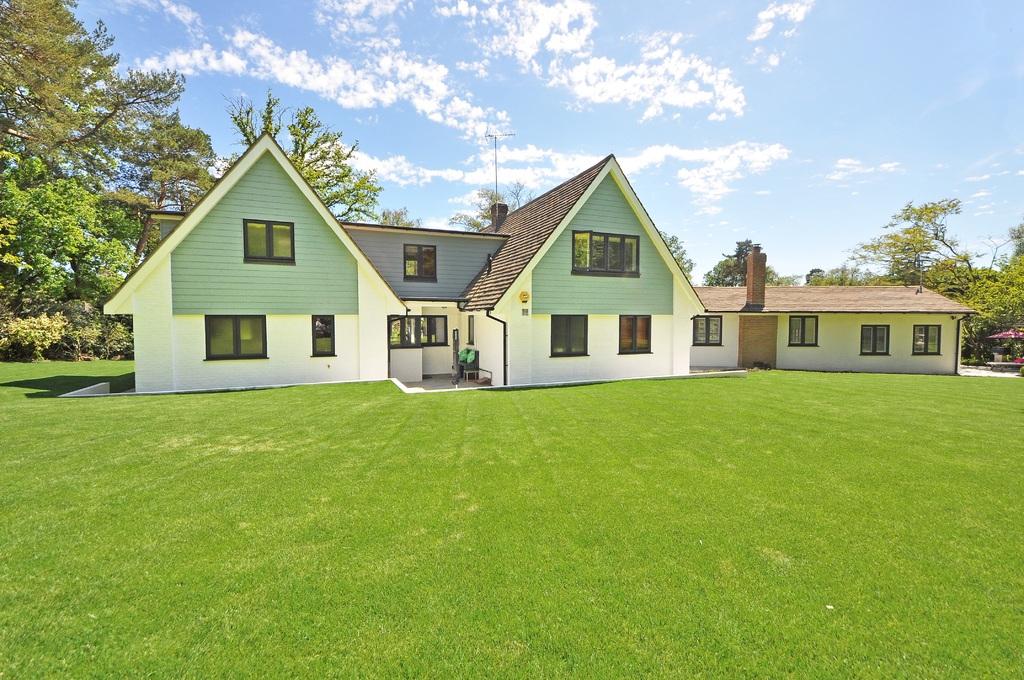
Lawn maintenance and fertilizing don’t end in the summer. For a perfect lawn, you have to work year-round.
The climate can vary significantly depending on where you are in the country. However, these seasonal swings are far too extreme in the northeastern United States. These climatic variations have an impact on optimal practices for landscaping routines. You must choose a suitable grass for your climate and decide when to water, aerate, and mow it.
Sounds like a lot? Well, do not worry. We have got you covered!
Lawn care in the northeastern United States involves preparing your lawn & tuning up your lawn mower in the Spring, watering & mowing adequately in the summer, and preparing to winterize your lawn & preparing it for the following Spring in the fall.
Continue reading to learn more!
Spring Lawn Care In The Northeast

A brief application of lawn food in early Spring will help prepare your lawn for the warmer months.
You can think of Spring as the beginning of yard season. If you take care of your lawn maintenance from March to June, your grass will thrive during the entire growing season. However, the weather in the Northeast during Spring is notoriously erratic, with late-season blizzards that can deliver new snow followed by immediately record-breaking warm days.
Fortunately, regardless of how wild the spring season may be, homeowners in the Northeast have several options for keeping their lawns in tip-top shape. These are:
Tune-Up Your Mower
Take care of your mower before you even think about setting foot on your grass. At the beginning of the season, it is essential to have the lawn mower and any other equipment serviced, cleaned, and ready to be put to use. So, bring your lawn cutter in for maintenance as soon as Spring begins; this will allow you to avoid the crowds and ensure that your most important tool is in excellent working order when you use it.
Mowing
In Spring, when the grass reaches a height of 3 to 4 inches, it is time to mow. However, do not cut it shorter than 2 inches. It will hinder its ability to retain water and make it more susceptible to weed invasion. So, it is recommended that the lawns in the Northeast be maintained at the height of at least two inches tall.
Fertilizing
Ideally, you should fertilize your lawn in the middle of May, after the last risk of freezing or frost has passed. Apply fertilizer 24 to 48 hours before your first mowing; depending on the type, you can apply it again every four to eight weeks during the Spring and summer.
Use a fertilizer that is well-balanced for the sort of grass you have on your lawn as well as the requirements of the soil, and if you so choose, spread compost at the same time.
Applying lawn food in the Spring will give your grass a head start and help it survive better during the upcoming warmer month of the summer.
Related: How Often Should You Mow Your Lawn For The Best Results?
Overseeding

If your turf is patchy, Spring is a great time to overseed your lawn.
If your lawn has bald spots, the best time to overseed it is in the early to mid Spring. This will give the seeds enough to become established before the heat of summer hits.
Overseeding can help thicken the lawn, making it more lush and resistant to weed infestations. However, ensure that you get a grass seed compatible with your climate and soil conditions.
Weed Control
It is recommended that pesticides be applied twice in order to avoid crabgrass and other invasive weeds in the Northeast. The first herbicide application should be around the beginning of April, whereas the second should be around the middle of May.
This two-pronged approach will provide the best possible defense for a lawn throughout the uncertain spring months, when rains may wash away preliminary herbicide applications.
Aerating
In the northeastern United States, the spring season is not the most excellent time to aerate lawns unless the lawn is in critical need of aeration. If necessary, spring aeration of small patches is possible; otherwise, leave the yard and aerate it in the fall.
Spring Lawn Care In Northeast (Monthly)
March
- The 20th of March is officially the first day of Spring.
- Conduct a soil test to find out what your soil is missing.
- Inspect the grassy area and search for any problem spots.
- Make sure that your lawn equipment is in working order.
- Clear the grass of any and all sticks, twigs, and branches.
April
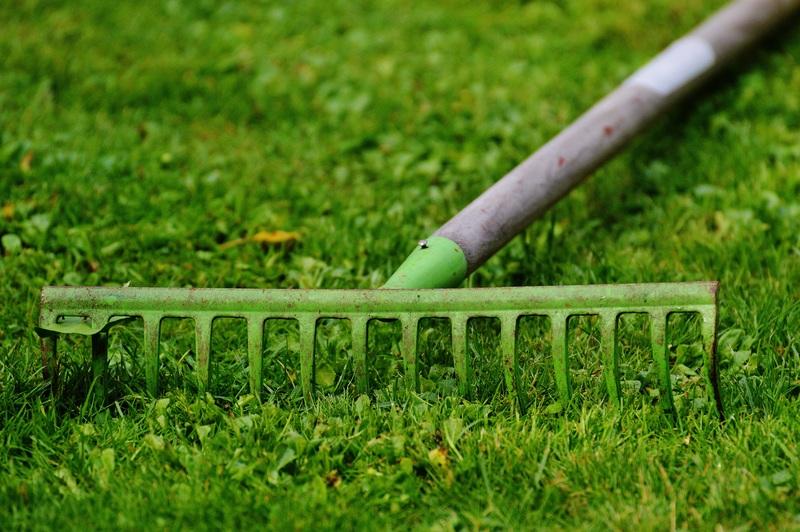
If your lawn has fallen leaves, twigs, and dead grass blades from winter, it is a good time to rake them.
- Rake the lawn to improve airflow & circulation in the grass blades.
- To activate soil bacteria, add humic acids and micronutrients.
- Before soil temps approach 55 degrees, use pre-emergent herbicides.
- If you didn’t winterize or fertilize your lawn last fall/winter, apply a spring fertilizer.
May
- Starting in May, begin your fungal preventive treatments.
- Add grub prevention if there has been a history of grubs or sod worms.
- Add a starter fertilizer when the temperature reaches 60 and grass begins to grow.
- Cut the grass tall and often. Recycle or mulch lawn trimmings.
Related: How To Use a 2,4-D Lawn Weed Killer To Control Weeds? (And Is It Safe?)
Summer Lawn Care In The Northeast
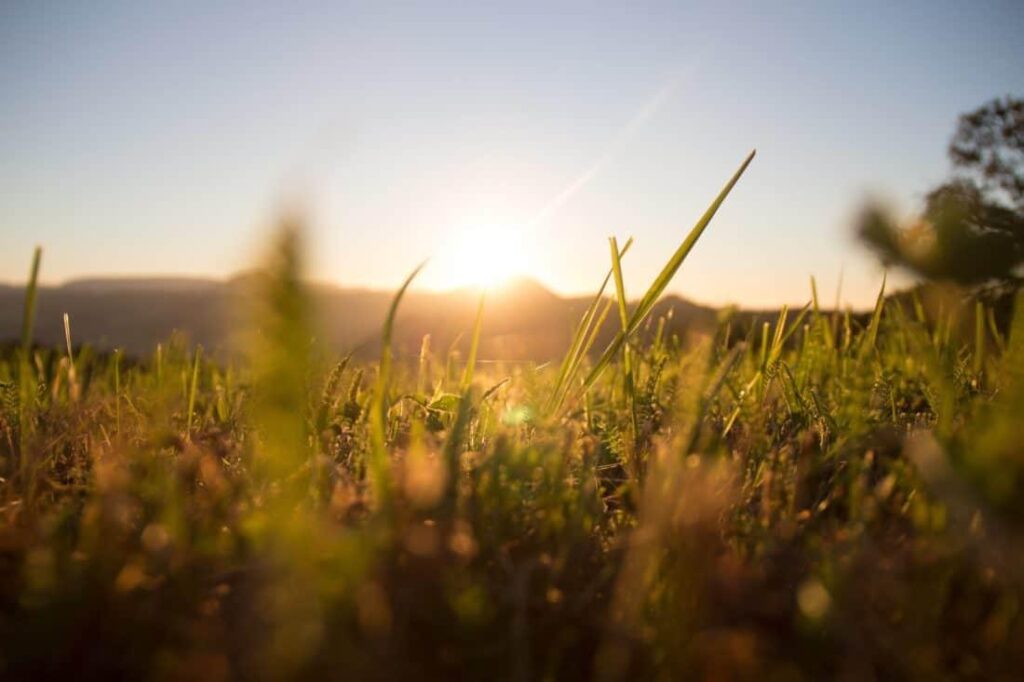
With good Spring preparations, Summer is all about watering and mowing.
When your lawn care routine is inadequate, the summer heat can be very damaging to your grass. If you cut your grass too short, water it too much or too little, or fail to catch pest problems in its early stages, your lawn might suddenly die. The key to success in the summer is to continue building on the solid foundation laid in the Spring.
Due to the erratic nature of summer weather, it is crucial that you maintain a close eye on your lawn to determine when specific treatments are required.
Here are a few things to do:
Watering
The requirements for watering will mainly be determined by the type of grass that you purchase. While some grass types can withstand dry conditions and require only occasional watering, others must be watered on a regular basis.
This is another reason why it is important to let the grass grow just a little taller so that it can establish deep roots that can reach moisture further beneath the surface.
If you don’t want your grass to turn brown during the summer, choose grass varieties that can withstand dry conditions (like buffalo grass), or prepare to water your yard around one inch every seven days. If you have sprinklers that come with a timer, you should program them to water your grass between the hours of 4 and 8 in the morning.
It’s OK if your lawn goes brown during times of drought or if you’re going to be away from home and won’t be able to water it. The grass changed color because it went dormant, and the color will return to normal once it is watered adequately.
Mowing
In the summer, you should plan to use your lawn mower around once a week. When it’s hot and dry, it may need to be mowed every three weeks, but when it’s cool and wet, your lawn may need to be trimmed every week. Keep an eye on how your grass grows.
When conditions are hot and dry, the grass may only need to be trimmed once every two or three weeks once it reaches a height of around three inches.
Scalping refers to cutting the grass at an excessively short length. If you do this, you will also stunt the growth of the area beneath the surface. As above, so below – if you want sturdy roots, it will be just as essential to allow for sufficient development above the soil.
If your grass starts to look burned, you should consider increasing the blades on your mower. During cool or wet weather, your lawn may need to be mowed twice a week.
Summer Lawn Care In Northeast (Monthly)
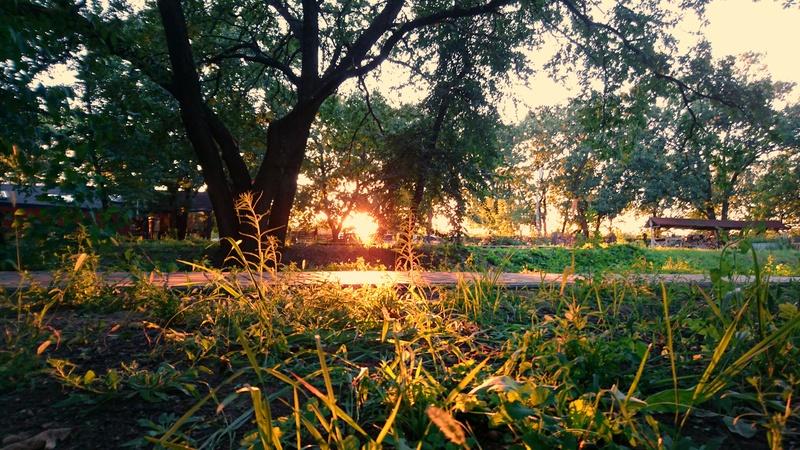
In July, fertilize your grass with slow-release nitrogen and organic materials.
June
- The 21st of June marks the beginning of summer.
- Spray broadleaf weeds selectively when air temperatures are under 85 degrees.
- Aim for 1′′-1.5′′ of water each week, including natural precipitation.
- June is also the time to apply a second coat of pre-emergent.
July
- Use organic lawn products and slow-release nitrogen fertilizer to fertilize.
- Apply insecticides and keep an eye out for grubs and other grass insects.
- Watch out for fungal and lawn diseases, especially as the humidity rises.
- Irrigate for as long as your municipality allows. Aim for 1.5′′ of watering per week.
- High temperatures and low rainfall can cause grasses to go dormant.
August
- The month of August is ideal for making improvements to your lawn.
- Get ready to overseed the area and eliminate the weeds.
- Use a fertilizer that has a gradual release rate and is organic.
- Keep an eye out for grubs and other insects occupying the lawn.
- Be on the lookout for fungi and other diseases affecting your yard.
Related: Lawn Mowing Pattern & Techniques | Cut Your Grass Like A Pro
Fall Lawn Care In The Northeast
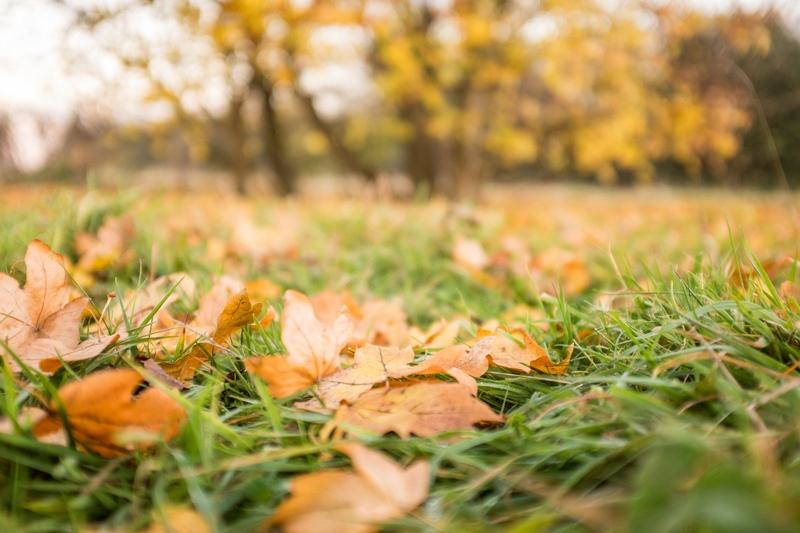
The fall is the best time to fertilize your grass if you only do it once every year.
It would help if you started getting ready to winterize your lawn and prepare it for the following Spring sometime in the early fall. If you live in any of the states between Maine and New Jersey, you probably already know that fall lawn care involves cleaning up and getting ready for the following year.
You’ll have a much easier spring if you get a head start on these tasks when the temperature drops. In fact, a good number of them are analogous to the actions that you carry out when Spring arrives.
Aerating
As mentioned before, the cooler fall temperatures mean that your grass will grow faster, which means that now is an excellent time to aerate it, which will loosen any compacted soil and allow the grass roots to grow deeper.
When soil isn’t compacted, and grass roots grow deeper, it creates a healthy lawn. This also allows your grass to recover fully before falling into dormancy during the winter.
Overseeding
Overseeding is best done in the fall because most grasses in the Northeast prefer cooler weather. However, it is vital that you have this done at least a month before the first frost that is anticipated in your region. Thanks to the Farmer’s Almanac, you can actually conduct a search on the internet to determine when the first frost is likely to occur.
The standard overseeding deadline in the northeastern US is the middle of September, although those living further north can do this as early as the end of August.
Cleaning Up
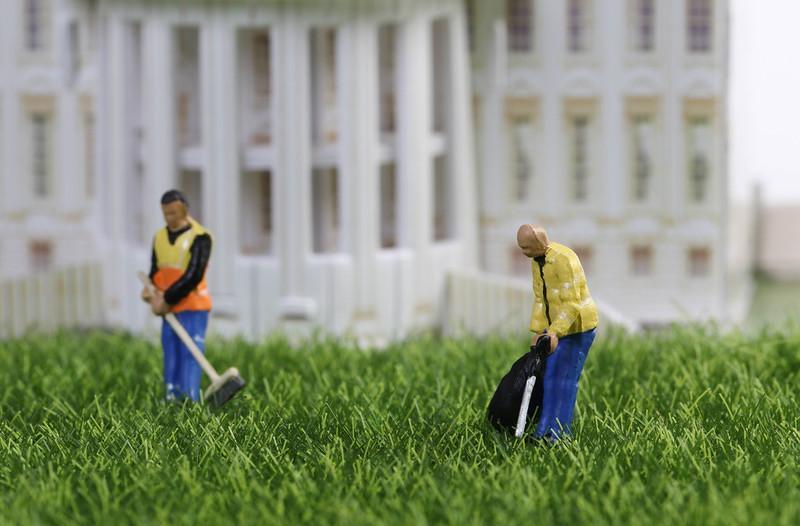
You should clean your lawn once or twice every week in the fall.
If you just chop the leaves up when you mow, you’ll end up with a layer that’s too thick and could suffocate your grass, so you’ll need to start cleaning them up after the fall season reaches its peak. If you don’t have the time (or the patience!) to rake, you can use a mulching mower to make many passes over your lawn and chop the leaves into smaller pieces.
This should be done once every two weeks during the fall.
Mowing
Your lawn will start growing at a faster rate when temperatures begin to drop, and because of this, you should probably continue to mow it on a regular weekly schedule until the end of the season. When leaves begin to fall, switch your mower to its mulching setting and then leave the mulched leaves on your lawn, where they will serve as fertilizer. They will, during the course of their decomposition, improve the overall health of the soil.
Fertilizing
The fall is the best time to fertilize your grass if you only do it once every year. You might start with a thin coat at the beginning of autumn and add more as the season progresses.
Fall Lawn Care In Northeast (Monthly)
September
- The 22nd of September is the first day of fall.
- It is an excellent time to start a new lawn or overseed an existing one
- Apply some good starter fertilizer and fertilize the soil.
- You can slice seed or overseed with high-quality grass seed.
- Aerate the soil by making a left-to-right and an up-and-down pass.
October
- Before the ground freezes and after your last mowing, apply a winterizer fertilizer.
- If you put off September tasks, get them done now while the weather is still warm.
- Mow low once more, aiming for a grass height of 2.5 to 3.0 inches.
November
- Finish off the season by spreading some winter fertilizer.
- Only trim your grass when it appears like your yard really needs it.
Final Thoughts
That brings us to a conclusion. Adhering to this lawn care schedule is a significant step toward achieving a flourishing lawn, and it won’t take you much longer to get the hang of it as each season goes by. I really hope that this calendar will be of assistance to you in the annual upkeep of your grass and making your lawn better.
Frequently Asked Questions (FAQs)
When should you fertilize your lawn in the Northeast?
The best time to fertilize your lawn is between twenty-four and forty-eight hours before you plan to cut it for the first time. Depending on the fertilizer you use, you should repeat the process anywhere from every four to eight weeks throughout the Spring and summer.
When should you aerate your lawn in the Northeast?
In the northern part of the United States, the best time to aerate your lawn is from the end of summer until the beginning of September. This is because the cool-season grasses planted in the Northeast undergo their most rapid development during the autumn months.
When should I put lime on my lawn in Massachusetts?
The application of lime to lawns in Massachusetts is often done most successfully in the fall and the Spring. Lime has a better chance of dissolving and getting to work in the fall because of the effects of precipitation (rain, snow, and cycles of freezing and thawing).
How often should I fertilize my lawn in New England?
Nearly all of the grasses that grow in the New England area of the cool-season variety are ideal for fertilizing them twice in the fall, in September and November, and then once more in the Spring, when the grass has a chance to put on new green growth.
When can you overseed in New England?
Early September to the middle of October is the best time to overseed lawns in New England. By this time, the weed growth has slowed, the daytime temperatures are lower, the soil is still warm, and there is abundant rainfall—all ideal factors for seed germination and growth.
Sources For Further Reading
Lawn Care Calendar For Northeastern Ohio (2022). Retrieved the 18th of September 2022, from https://lake.osu.edu/sites/lake/files/imce/Program_Pages/ANR/FS%20101%20Lawn%20Care%20Calendar.pdf
Lawn Care Calendar for Northern Illinois – Lawn Talk- University of Illinois Extension. (2022). Retrieved the 18th of September 2022, from https://web.extension.illinois.edu/lawntalk/planting/lawn_care_calendar_northern_il.cfm
Care. (2014). Healthy Lawn Care. Retrieved the 18th of September 2022, from https://web.uri.edu/safewater/protecting-water-quality-at-home/sustainable-landscaping/healthy-lawn-care/
Lawn Management through the Seasons. (2022). Retrieved the 18th of September 2022, from https://extension.psu.edu/lawn-management-through-the-seasons
Editor’s Recommendations
Why Is Clover Taking Over My Lawn? Possible Causes & Natural Solutions!
Brown Spots In The Grass: Causes, Solutions & Prevention | A Comprehensive Guide







